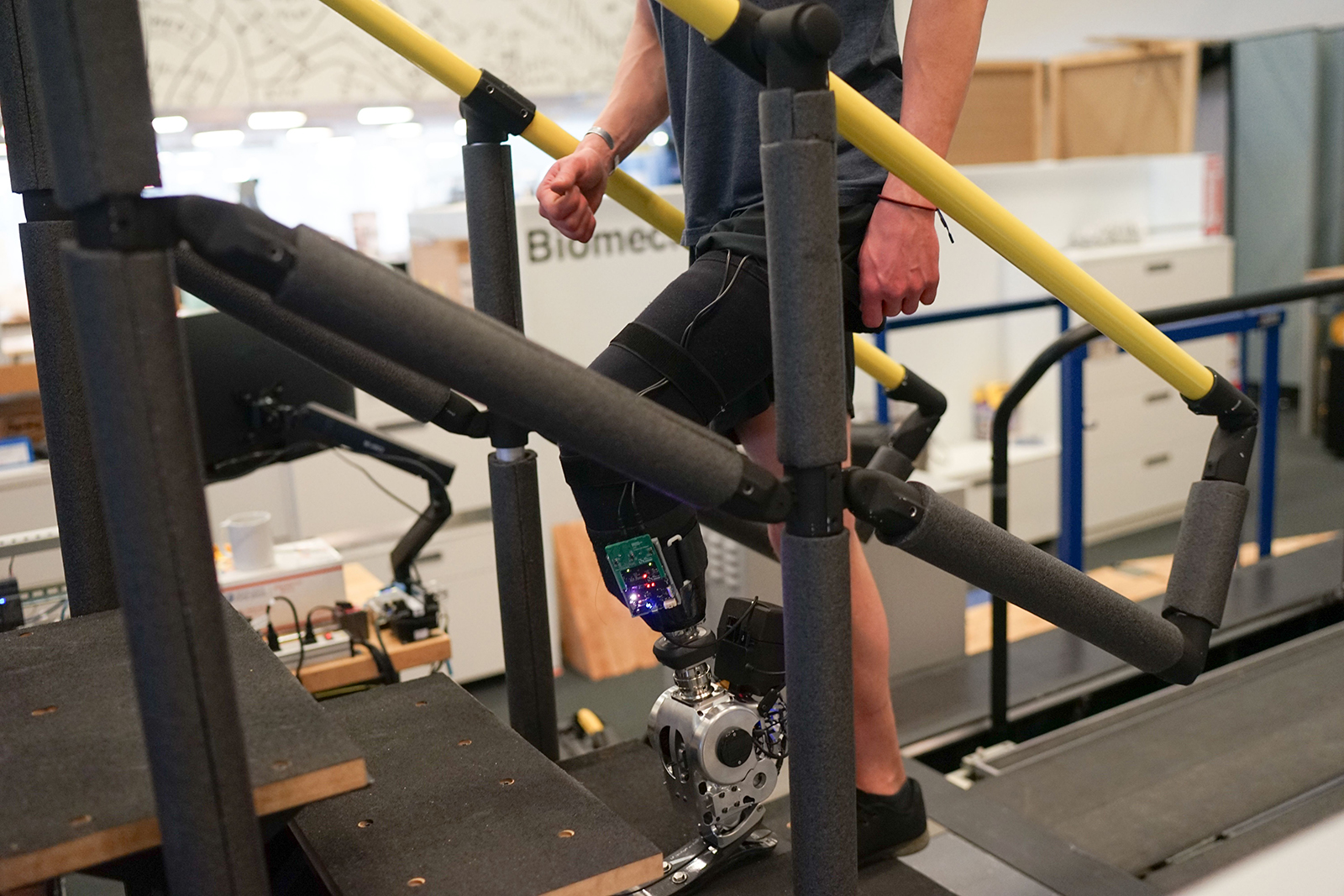
A new surgical procedure for below-knee limb amputation allows for neural control that improves maneuverability of a robotic limb, suggests a study funded by the National Institutes of Health (NIH). Compared to a control group who had traditional surgery, patients undergoing the procedure walked faster with their prostheses and were better at climbing stairs and avoiding obstacles. The procedure restores the ability of muscle pairs—known as agonists and antagonists—in the severed limb to work together. Sensors in the neuroprosthetic interface send neural signals from the restored muscle pairs to the prosthesis, enabling continuous neural control. The user can perceive and control the device, almost as if it were part of their residual limb.
The study was conducted by Hyungeun Song, Ph.D., postdoctoral associate, and Hugh Herr, Ph.D., professor at the Massachusetts Institute of Technology, and their colleagues. It appears in Nature Medicine. NIH funding was provided by the Eunice Kennedy Shriver National Institute of Child Health and Human Development.
Background
Current robotic limbs rely on algorithms to mimic a natural gait but are not under the user’s full control. Traditional amputations sever connections between agonist and antagonist muscle pairs, preventing them from working together. For example, during a biceps curl, movement of the forearm is possible when the biceps muscle (the agonist) contracts to bring the forearm up and the triceps muscle (the antagonist) relaxes. Without connections between muscle pairs, the nervous system cannot sense muscle position and contraction—information the brain needs to control the prosthetic limb.
In previous work, the study authors developed a surgical procedure, known as the Agonist-antagonist Myoneural Interface (AMI), which links the ends of the severed muscle pairs, allowing them to once again contract and relax in tandem. In another study , the authors found that patients who underwent AMI surgery had control of residual muscles when using the prosthetic limb. The neural signals produced by the reconnected muscles more closely matched those of an intact limb.
Results
For the current study, the authors tested whether the neural signals from the reconnected residual muscles in below-knee amputees could restore natural walking patterns. The study enrolled 14 people from ages 18 to 65 who had below-knee amputations. All were experienced at using a standard lower leg prosthesis. Half underwent the AMI procedure to connect the opposing muscle pairs below the knee, and half had standard amputation surgery. The prosthetic leg was equipped with sensors capable of detecting neural activity in a residual limb, enabling direct and continuous neural control of the prosthetic ankle and foot.
Without relying on algorithms to direct the gait in the prosthetic limb, the group with AMI surgery walked an average of 41% faster along a level surface than the group that had conventional surgery. This higher speed in the AMI group is equivalent to peak speeds of people without an amputation. Similarly, the AMI group performed better while walking up and down slopes and stairs, as well as avoiding obstacles while walking on a level surface.
Moreover, the AMI group showed more natural movement, such as pointing the toes of the prosthetic foot upward while going up stairs. In addition, they were better able to coordinate their prosthetic limb with their intact limb and control the force to push off the ground for various walking speeds, similar to someone without an amputation.
Significance
“Because of the AMI neuroprosthetic interface, we were able to boost neural signaling,” Dr. Song said. “This restored a person's neural capability to continuously and directly control the full gait, across different walking speeds, stairs, and slopes—even going over obstacles.”
Reference
Song, H, et al. Continuous neural control of a bionic limb restores biomimetic gait after amputation. Nature Medicine. 2024. https://doi.org/10.1038/s41591-024-02994-9 .

 BACK TO TOP
BACK TO TOP